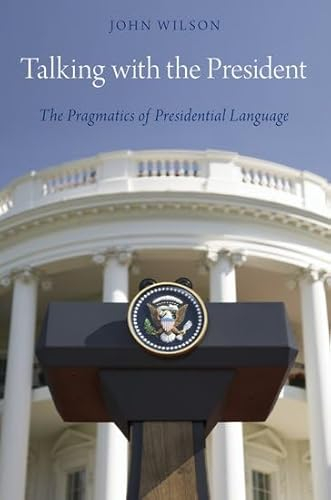

Talking with the President
- Utgiven: 2015
- ISBN: 9780199858804
- Sidor: 288 st
- Förlag: OUP USA
- Format: Inbunden
- Språk: Engelska
Om boken
This book provides a pragmatic analysis of presidential language. Pragmatics is concerned with "meaning in context," or the relationship between what we say and what we mean. John Wilson explores the various ways in which U.S. Presidents have used language within specific social contexts to achieve specific objectives. This includes obfuscation, misdirection, the use of metaphor or ambiguity, or in some cases simply lying. He focuses on six presidents: John F. Kennedy, Richard M. Nixon, Ronald W. Reagan, William F. Clinton, George W. Bush, and Barack H. Obama. These presidents cover most of the last half of the twentieth century, and the first decade of the twenty first century, and each has been associated with a specific linguistic quality. John F. Kennedy was famed for his quality of oratory, Nixon for his manipulative use of language, Reagan for his gift of telling stories, Clinton for his ability to engage the public and to linguistically turn arguments and descriptions in particular directions. Bush, on the other hand, was famed for his inability to use language appropriately, and Obama returns us to the rhetorical flourishes of early Kennedy. In the case of each president, a range of specific examples are explored in order to highlight the ways in which a pragmatic analysis may provide an insight into presidential language. In many cases, what the president says is not necessarily what the president means.
Åtkomstkoder och digitalt tilläggsmaterial garanteras inte med begagnade böcker
Mer om Talking with the President (2015)
I april 2015 släpptes boken Talking with the President skriven av John Wilson. Den är skriven på engelska och består av 288 sidor. Förlaget bakom boken är OUP USA.
Köp boken Talking with the President på Studentapan och spara pengar.
Referera till Talking with the President
Harvard
Wilson, J. (2015). Talking with the President. OUP USA.
Oxford
Wilson, John, Talking with the President (OUP USA, 2015).
APA
Wilson, J. (2015). Talking with the President. OUP USA.
Vancouver
Wilson J. Talking with the President. OUP USA; 2015.



















